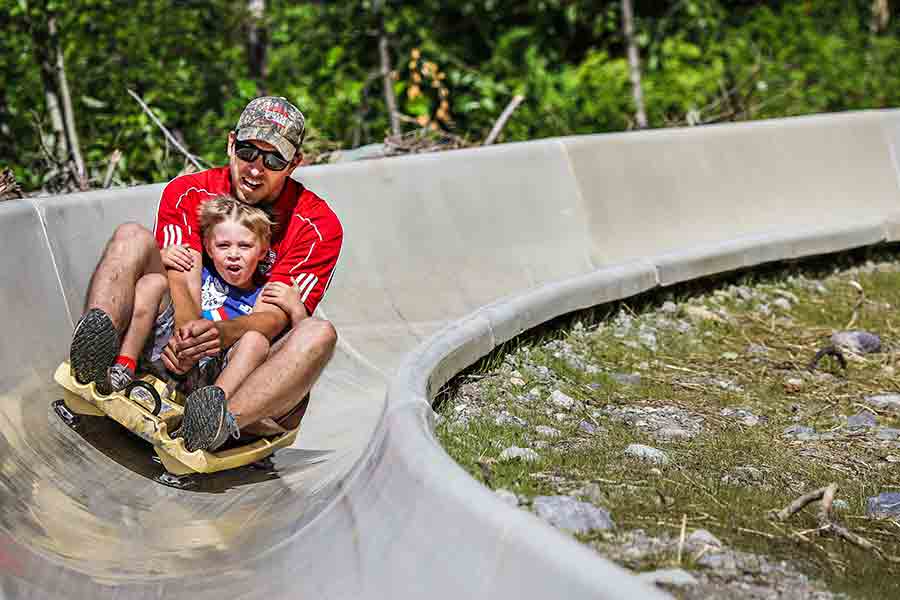Business Owners Report Slower Summer Tourism
Airline and recreation demand returned to 2019’s numbers while lodging occupancy declined significantly in response to high travel costs
By Maggie Dresser
After the record-breaking tourism traffic that flooded the Flathead Valley in 2020 and 2021, Glacier Guides owner Denny Gignoux said summer at his outfitting company in West Glacier saw a decline as international travel reopened and high travel costs impacted visitors.
“It was still very busy, but it was definitely not as busy as last year,” Gignoux said.
Raft trips saw a 25% decline, Gignoux said, while backpacking and cycling services stayed about the same. Lodging and fishing trips were also slower than last year.
Flooding this spring contributed to a slower demand for raft trips, and although the Flathead Valley did not see substantial damage, Gignoux said flooding in Yellowstone National Park likely deterred visitors away from Montana.
“There was a lot of negative publicity about flooding,” Gignoux said. “When the sheriff says that nobody should be on the river, that isn’t good for business. More importantly, after the flooding in Yellowstone, people assumed the whole state had flooded when they saw the roads washed away.”
Gignoux says this summer’s tourism season was comparable to 2019, which reflects regional trends.
Racene Friede, president and CEO of Glacier Country Tourism, said most of the business owners she’s spoken with in northwest Montana are reporting similar anecdotes.
“Everything was so chaotic the last two years, but then the world changed again and borders and urban cities opened up,” Friede said. “All these destinations across the country decided they wanted their market share back.
Friede also blames inflation, high fuel prices and expensive airline costs for the slower business.
According to airline data, there were 64,526 total enplanements this July at Glacier Park International Airport compared to 72,683 during the same month in 2021. In 2019, there were 60,470 enplanements in July.
While retail and recreation sales dipped slightly, Friede said transportation, food and lodging expenses dipped the most and numbers were down 15% to 30% depending on the month.
In Whitefish, lodging occupancy in June declined 8.7% compared to the same month last year and it was down 3.5% compared to 2019, according to the Whitefish Lodging Report. In July, occupancy was down 11.5% compared to July 2021 and it was down 10% compared to 2019.
“The cost of travel in general is higher this year,” Whitefish Convention and Visitors Bureau Executive Director Dylan Boyle said.
In July, average daily lodging rates increased 10% compared to last year and 40% compared to 2019.
At Whitefish Mountain Resort, Public Relations Manager Chad Sokol says tourism on Big Mountain was back to 2019 levels and there was an uptick in demand for family activities like the zipline and the aerial adventure park.
Despite a slow start to the summer with cold spring weather and June snow, which delayed the bike park’s opening, business was steady once the weather warmed up, Sokol said.
“We’re not breaking records this summer, but it’s still a high demand,” Sokol said. “It’s not quite as insane as the last two years.”
While the reopening of international borders diverted many Americans from the country, Canadian tourism in the United States picked up following the U.S.-Canada border reopening.
Personal vehicle passengers crossing the border at the Roosville port in Eureka this July was down 40% compared to 2019, according to vehicle data.
“That isn’t surprising,” Boyle said. “While we are seeing an uptick, compared to those pandemic numbers we are still significantly less.”
As the shoulder season approaches, business owners and tourism officials suspect traffic will continue to fizzle until the winter tourism season begins.
“I don’t think the shoulder season will be as busy as the last two years,” Gignoux said. “People are going back to school and work and there’s a little uncertainty out there with the price of food and fuel and things are getting more expensive.”